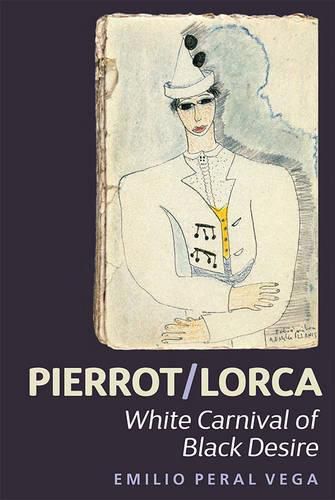Readings Newsletter
Become a Readings Member to make your shopping experience even easier.
Sign in or sign up for free!
You’re not far away from qualifying for FREE standard shipping within Australia
You’ve qualified for FREE standard shipping within Australia
The cart is loading…






Academic research has paid little attention to the importance of the figure of Pierrot in Garcia Lorca’s imagery and, above all, in his literary and personal life. An image of marginality and failure, Pierrot was soon taken over by Spanish intellectuals of the early twentieth century as a representation of the bohemian spirit and, corresponding to his marginal status in matters of love, as a symbol of furtive desires experienced by those whose sexuality had to remain silent. Consequently, Garcia Lorca, as Pierrot, needs a mask to cover his identity, facing perpetual failure in his relentless pursuit of the other. As can be seen already from the poems, prose and plays of his youth,Garcia Lorca outlines in Pierrot his innermost self, a trend that will continue in the aforementioned series of drawings and some of his major pieces, such as El publico. Pierrot / Lorca: White Carnival of Black Desire aims, from a multidisciplinary perspective, to open new critical readings of both Garcia Lorca’s work and some episodes of his life; as with, for example, his relationship with Salvador Dali, which can be presented in theatrical terms: Harlequin (Dali) / Pierrot (Garcia Lorca).
Emilio Peral Vega is Associate Professor of Spanish Literature at the Universidad Complutense de Madrid.
$9.00 standard shipping within Australia
FREE standard shipping within Australia for orders over $100.00
Express & International shipping calculated at checkout
Academic research has paid little attention to the importance of the figure of Pierrot in Garcia Lorca’s imagery and, above all, in his literary and personal life. An image of marginality and failure, Pierrot was soon taken over by Spanish intellectuals of the early twentieth century as a representation of the bohemian spirit and, corresponding to his marginal status in matters of love, as a symbol of furtive desires experienced by those whose sexuality had to remain silent. Consequently, Garcia Lorca, as Pierrot, needs a mask to cover his identity, facing perpetual failure in his relentless pursuit of the other. As can be seen already from the poems, prose and plays of his youth,Garcia Lorca outlines in Pierrot his innermost self, a trend that will continue in the aforementioned series of drawings and some of his major pieces, such as El publico. Pierrot / Lorca: White Carnival of Black Desire aims, from a multidisciplinary perspective, to open new critical readings of both Garcia Lorca’s work and some episodes of his life; as with, for example, his relationship with Salvador Dali, which can be presented in theatrical terms: Harlequin (Dali) / Pierrot (Garcia Lorca).
Emilio Peral Vega is Associate Professor of Spanish Literature at the Universidad Complutense de Madrid.